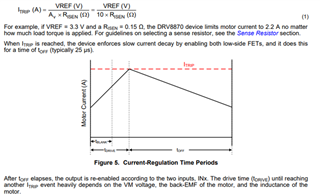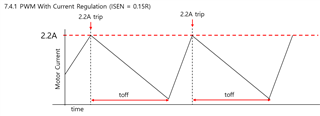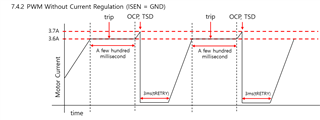Hello,
My customer has some questions regarding the operation when the ISEN pin is connected to GND.
They understand that the current limiting feature of the DRV8870 feature is not used if the ISEN pin is connected to GND.
Q1) When ISEN is connected to GND, does it only trip 3.6A for a few hundred milliseconds?
Q2) When ISEN is connected to GND, is the Itrip value set to 3.6A?
Q2-1) If it is correct that the Itrip value is set to 3.6A, does this mean that the motor driver will not be damaged even if the motor continuously uses 3.6A?
Q3) If there is no current limitation when ISEN is connected to GND, will the motor driver be damaged if the motor draws a current of more than 3.6A?
Q4) What is the difference between Overcurrent protection trip level (3.7V~6.4V) and Itrip?
Thank you.
JH







